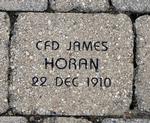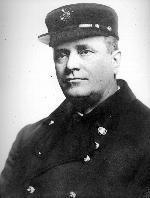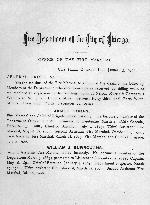Firefighter Record
Firefighter Details
| Name | James Horan |
| Agency | Chicago Fire Department |
| Rank | Chief Fire Marshal |
| Type of Firefighter | Career |
| Age Range | 51 to 55 |
| Sex | Male |
| Date of Birth | 0/0/0 |
| Date of Death | 12/22/1910 |
| Cause of Death | Struck by object |
| Nature of Death | Trauma |
| Attribute of Death | [not applicable] |
| Type of Duty | Firefighting operations |
Incident Details
| Incident Name | Union Stockyards Fire |
| Incident City | Chicago |
| Incident State | IL |
| Incident Date | 12/22/1910 |
| Incident Location | Industry/ Manufacturing |
| Incident Attribute | Structural collapses , Explosions , Fires |
Incident Summary
In 1910, Chicago’s Union Stockyards and Transit Company was one of the world’s largest centers of industry. The 450-acre site contained thousands of wooden animal pens, barns, haylofts, slaughterhouses, packing plants, and warehouses owned and operated by more than 100 separate meatpacking businesses. The Union Stockyards, famously documented in Upton Sinclair’s The Jungle, established Chicago as the “Hog Butcher to the World,” but the site was also home to the worst fire service disaster in Illinois history.
At 4 AM on December 22, 1910, a night watchman reported a fire in the basement of a six-story cold storage building operated by the Nelson Morris & Company. The refrigerated warehouse was a particularly dangerous fire hazard as the interior walls and floors were wooden and soaked in animal fat and grease. Furthermore, the warehouse contained hundreds of cured hogs that were preserved with saltpeter, one of the main ingredients in gunpowder. Although Chicago firefighters responded within minutes from the two stockyard firehouses and from elsewhere in the city, any hope of dousing the fire before it spread to the rest of the building was lost when the firefighters discovered that the nearby fire hydrants had been shut off to prevent freezing. The warehouse was engulfed in flames by the time firefighters located and activated the water valves that fed the fire hydrants.
Numerous physical obstacles further restricted the fire fighting efforts, as railway cars, brick walls, and other warehouses closely surrounded the cold storage building. These obstructions made it impossible to set up ladders and, as a result, the firefighters were unable to reach the warehouse’s upper floor windows to open the iron shutters and release the pressure that was building up inside. The heat from the fire caused the cold air inside the refrigerated warehouse to expand at a dangerous rate and, at about 5 AM, the pressure inside the building produced a massive explosion. Chief Fire Marshal James Horan had just arrived and was directing operations from the building’s loading dock when the explosion occurred. An entire six-story wall collapsed on the loading dock, killing Horan, 2nd Assistant Chief Fire Marshal William Burroughs, three captains, four lieutenants, twelve other city firefighters, and two private firefighters employed by Morris & Company.
Fire fighting efforts were severely complicated by the explosion, not only because the command structure was decimated, but also because the blast had set a nearby seven-story lard house on fire. Moreover, department personnel were diverted to try to rescue the firefighters buried by the collapsed wall. First Assistant Chief Charles Seyferlich, now in command, called in several special alarms, bringing more than 50 engine companies and hundreds of off-duty firefighters to the scene. Fire fighting operations lasted for more than 24 hours before the blaze was completely extinguished and the last bodies were recovered from the rubble. With 23 firefighters killed, the Union Stockyard Fire ranks as one of the largest losses of firefighters in a single event in U.S. history.


